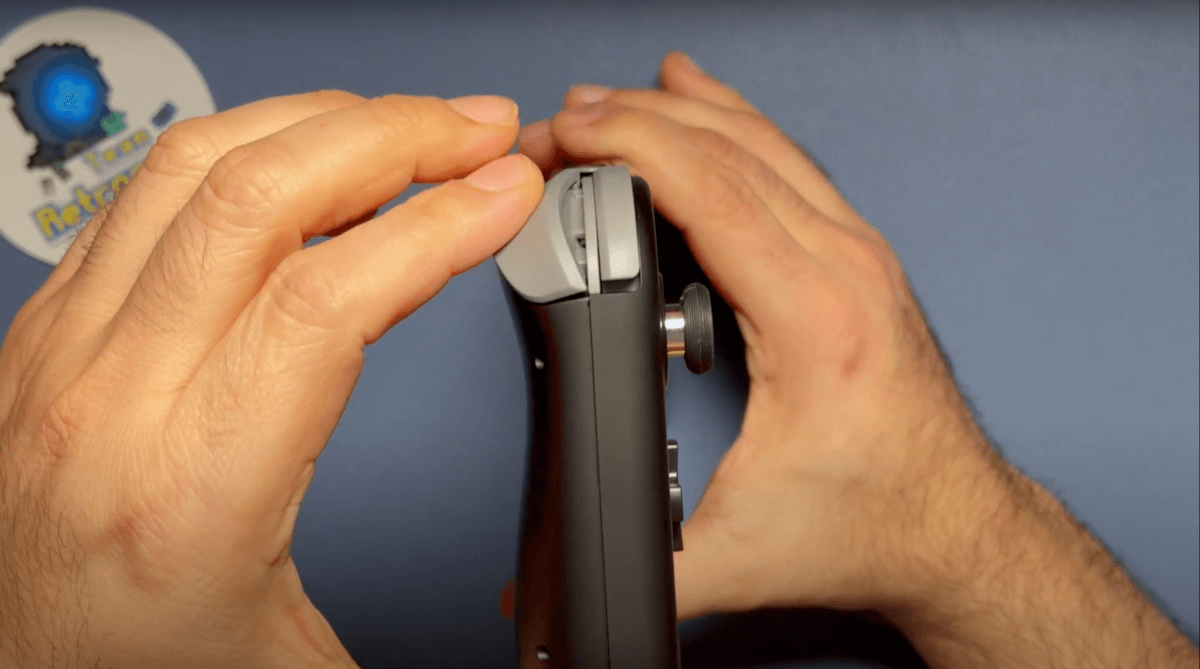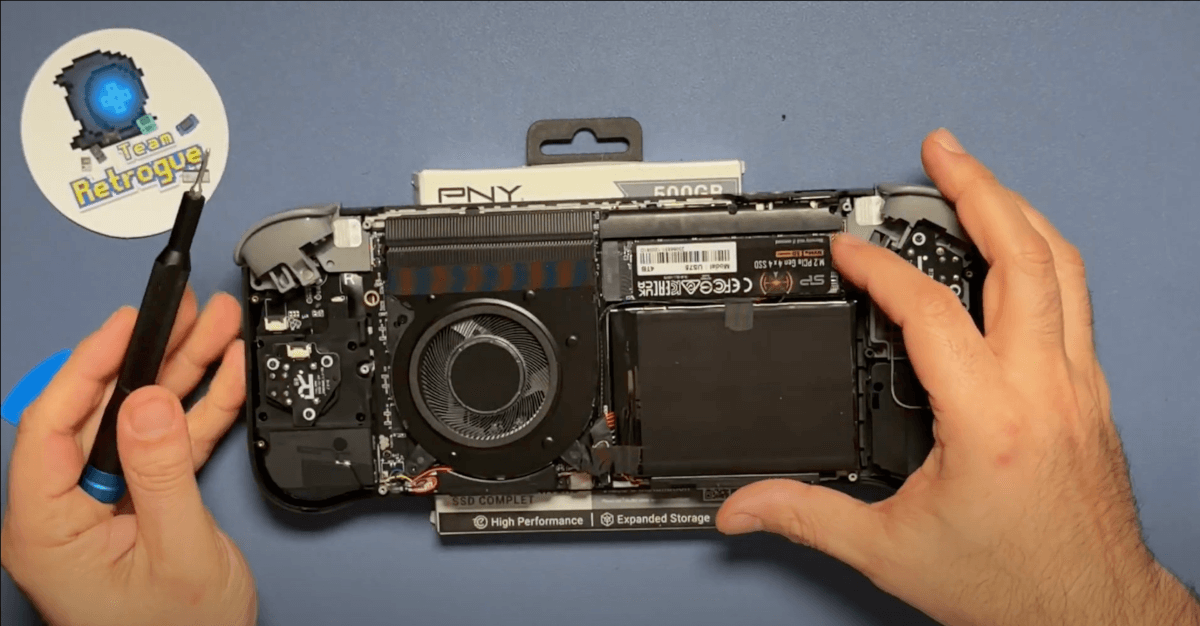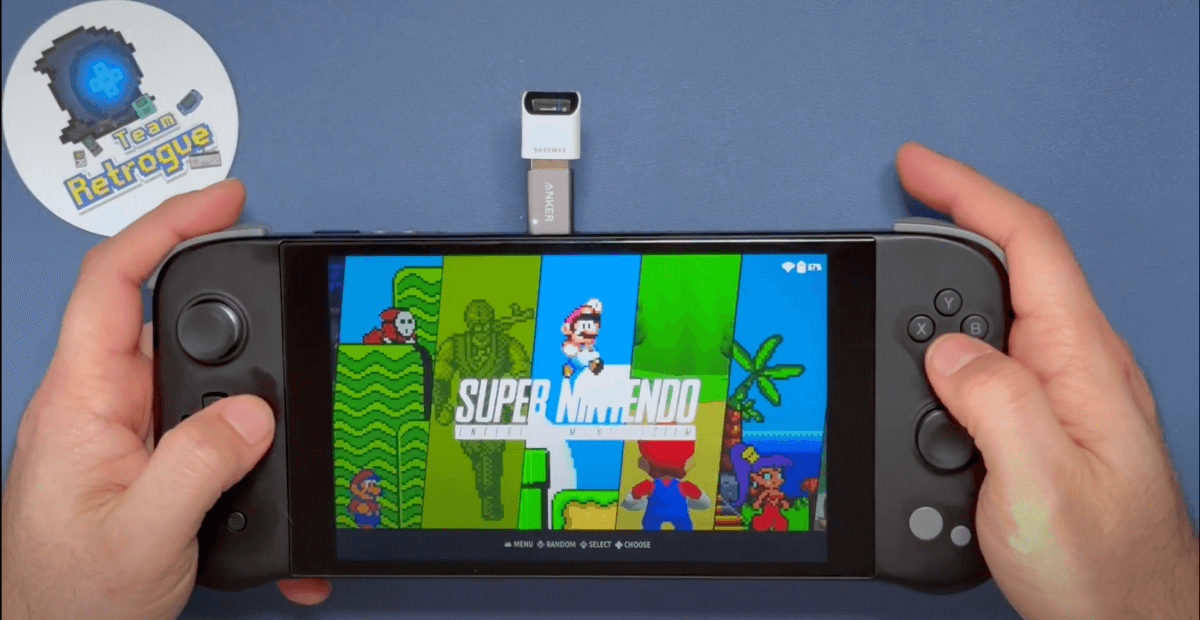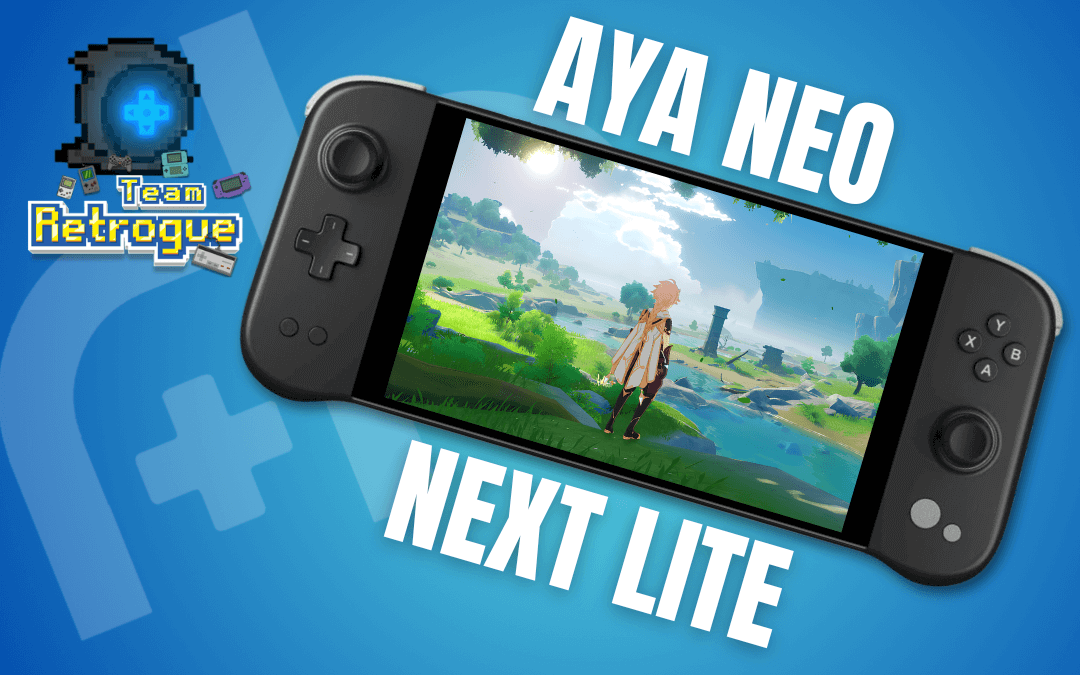Greetings friends and fellow enthusiasts! This is Mikhailov from Team Retrogue, where we like retro games and the devices that bring them to us. In this article, we are taking a look at the Ayaneo Next Lite.
This is a budget Windows Handheld that runs a lower-powered chip but has a lot of potential behind it. Let’s touch on some of the most important details about this handheld for both PC gaming and Emulation. We’ll see if this budget device is worth your hard-earned dollarbucks. This written review is designed to supplement my video on the Ayaneo Next Lite, and you can find that video below:
Introduction
Ayaneo typically lists their devices on Indegogo. Then, after release, devices sell at the retail price on their website. However, this was a very different release. Preorders went live on January 31st and started shipping the next week.
I received my unit on February 9. This was exactly a 9-day turnover from placing my pre-order to actually receiving my device. This was a very surprising release structure from Ayaneo, Ideally, more handhelds need to be released this way.
This device can be purchased starting at $299, but the $349 price point might be more appealing. This higher price sports a bigger hard drive, but starts encroaching on “Steam Deck” territory. You can currently acquire the LED Steam Deck in the US starting at that $349 price point already!
Ayaneo originally planned to ship the unit with HoloISO, a version of SteamOS. The company backpedaled after some blowback by the community. Instead, Ayaneo shipped the device with Windows 11 Home. That was a good choice because the HoloISO image is not in good shape at all. You cannot even use the Ayaneo buttons with it.
TDP controls also aren’t working, so as much as I wanted to cover the experience with HoloISO, I feel that I can’t properly review an incomplete operating system. So instead, this article primarily focuses on the Windows experience.
Specs and Hardware
![]()
An AMD Ryzen 5 4500U CPU with Radeon Vega 6 graphics powers this device. The Next Lite houses 16GB of LPDDR4x RAM, as well as a 512GB m.2 full-sized 2280 Drive.
The device features a 7” 800p IPS OCA Laminated touchscreen and a 47-watt hour battery. The device connects utilizing WiFi 6 and Bluetooth 5.2, and there are 3 USB-C ports on this device. Two are fully featured with display out and charging, and one is for data only. There is also a 3.5mm Headphone jack.

Cheap Triggers, but Great Joysticks!
The triggers appear to be made of kind of cheap plastic. Now these are still hall-sensing triggers, but I’m not a fan of this material at all. This same cheapness can be seen in the Ayaneo buttons on the bottom right of the device.
Usually, these buttons are labeled, but here, they’re just blank, cheap-looking buttons, which contributes to the fact that this is a budget handheld. You’re also missing the two function buttons that Ayaneo usually puts at the top of their device which makes navigating Windows more difficult than it should be.
On the positive side, the device sports some really nice full-sized joysticks. Despite being 725 grams, the Next Lite feels light and comfortable in the hand. I have enjoyed long gaming sessions on this handheld.
No SD-Card?
There is a full-sized SSD in the device. However, there is absolutely no Micro SD card slot. That 512GB fills up fast if you have a lot of games. I purchased a 4TB hard drive from Amazon because I wanted to see how hard it would be to replace the hard drive.
It is not hard to unscrew the device. Simply unscrew eight tri-wing screws on the back, as well as one screw each on the top and bottom. Ayaneo didn’t hide the screws like they tend to.
The hardest part of the entire hard drive swap was removing the back plate. It’s on there good, and I’m pretty sure I scratched the plastic a bit when prying it off even though I was careful. However, once I removed the plastic, the hard drive was right there front and center so it was very easy to swap.

I used a Silicon Power 4GB NVme.
This hard drive replacement takes the budget out of budget device because it cost me an extra $200 for this hard drive, bringing the total up to $499, which definitely encroaches on Steam Deck territory and makes this a less desirable device.

Ban calls this the “Dongle Tower.”
The lack of an SD Card slot also handicaps this device in other ways. For example, you can boot into JELOS using this chipset, but you need to connect an SD card reader or a USB-C drive, and who wants an unwieldy drive sticking out of their device? One shouldn’t have to shell out extra for a new hard drive just to make this experience more enjoyable.
Gameplay
Now let’s talk briefly about performance. I will be doing some performance showcases in a future video, so let me know in the comments what you want to see. The 4500U CPU is an older chipset, but it still checks out. As long as you don’t mind playing indie titles, or playing games at low settings, you can play quite a bit on this device.
Palworld, under the “AAA Game setting” in AyaSpace with a cap of 15-watt TDP, runs at very low settings at 800p and does reach 30 frames per second. Sometimes that performance will dip a bit, but never went below 25FPS and never felt unplayable.
I was able to play this game for an hour and the battery went from 81% to 20%. Genshin Impact also runs very well at low settings at 30 frames per second. The framerate is stable and the game runs under the “Normal Game” setting in AyaSpace with a cap of a 12-watt TDP.
Under that normal game setting, the Wii U version of Zelda: Breath of the Wild, running on the Cemu emulator works using a mod called FPS++. You can find right in CEMU under the graphics packs.
Before turning this setting on, I only averaged 18-20 frames per second, but after enabling FPS++, I’m getting full speed or close to it, and the TDP only caps at 12 Watts. Most of the time the game hovers around 8 or 9 Watts. From the testing I was able to do with this device, I was pleasantly surprised at what it is capable of at the $350 price point.
Positives
Now it’s time to wrap things up with my final thoughts, and I’ll start with the positives, the first of which is the price-to-performance. For $299, you’re getting a solid Windows Handheld with some fairly decent performance. I went in fully prepared to explain all the things this handheld couldn’t do but was surprised by everything it could do.
Because the device has an 800p screen, it draws less power from games which should make battery life slightly better than expected. The ergonomics are pretty darn comfortable, and the device does not feel its actual weight. It actually feels lighter. I don’t mind playing this for long sessions as my hands don’t get tired of holding it.
I also feel it’s worth noting that this handheld is also very snappy when navigating Windows. Part of why I didn’t really care for low-powered handhelds like the Loki Zero and the Anbernic Win600 is that the chipset was so low that the operating system itself would lag when doing basic tasks, and that’s not a concern with this device. Everything is snappy and responsive.
Negatives
But of course, no device is perfect, so here are some things that I’m not a fan of with this handheld. I don’t like the material that the triggers and some of the buttons are made of. They come off as a little too cheap and almost like a kids’ toy.
The lack of a microSD slot makes things much harder to expand storage if you are interested. Thankfully, the inclusion of a full-sized Hard Drive means you only have to really upgrade your storage once. Unfortunately, that also means that upgrading storage is not a plug-and-play experience so not everyone will be comfortable doing it.
Then there’s the problem with the price. When there are Steam Deck systems available for the same price that have similar or better performance, SteamOS, a similar 800p screen, and an SD card slot, it becomes harder to sell the Next Lite for about the same price, or a little bit more, you can, as the kids say, “Just get a Steam Deck Bruh.”
You also need to consider that at the time of writing, you can purchase a Steam Deck now and have it within a week, instead of waiting until April to get something that might not necessarily be any better.
Conclusion
I am generally satisfied with the Ayaneo Next Lite. However, it may not necessarily be a good fit for your needs. There are some great positives, but just enough negatives to push this over the realm of a “budget” handheld.
You can purchase the Ayaneo Next Lite directly from Ayaneo here.
What did you think of this article? Let us know in the comments below, and chat with us in our Discord!
This page may contain affiliate links, by purchasing something through a link, Retro Handhelds may earn a small commission on the sale at no additional cost to you.
